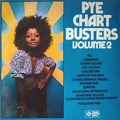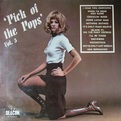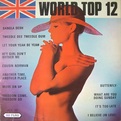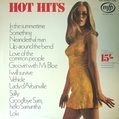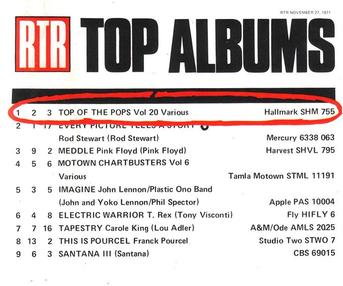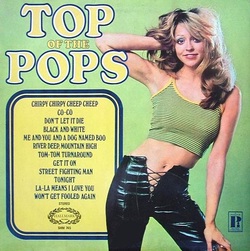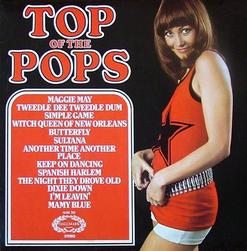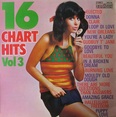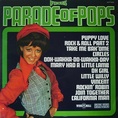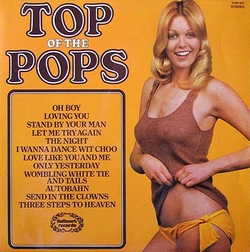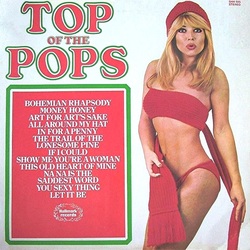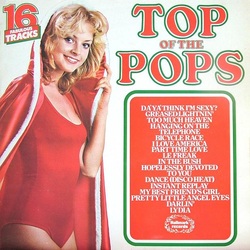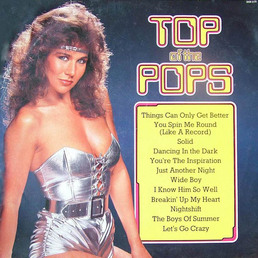About the albums
The story of the TOP OF THE POPS albums is long - the series ran from 1968 until 1985, with a good deal more release activity since. A tally of all the UK records and CDs runs to almost 150 albums and 25 EPs - to say nothing of the overseas releases.
Our potted history follows:
Our potted history follows:
The plan was to release a regular collection of current hits, with a consistent title. Fortune ensued when the company noted that the term 'Top of the Pops', despite being used by BBC television, was not legally protected.
Part of the eventual success of the series hinged on the now famous sleeve design. Pickwick's MD Monty Lewis gave the art team's Bill Graham the photo which would appear on volume 1, and asked him to come up with a design which "Could be seen from the other side of Victoria Station" (which is to say, from miles away). A couple of hours later, Bill had created something which would become a design icon - complete with the Top of the Pops logo, for which he created the distinctive outlining effect on the lettering, so it would stand out against any coloured background. (Contrary to legend, the cover models were not cut out with scissors and pasted on - rather, the background colours were sometimes re-touched at the printers, hence the sometimes crude outlines on display.)
Volume 1 (above) materialised in June 1968, and Volume 2 emerged in September. Come 1969, and volume 3, the series came into full swing, six albums appearing that year plus the first in what would become a traditional end of year retrospect in the shape of Best of “69”. A similiar release schedule would hold for the whole of the 1970s.
Part of the eventual success of the series hinged on the now famous sleeve design. Pickwick's MD Monty Lewis gave the art team's Bill Graham the photo which would appear on volume 1, and asked him to come up with a design which "Could be seen from the other side of Victoria Station" (which is to say, from miles away). A couple of hours later, Bill had created something which would become a design icon - complete with the Top of the Pops logo, for which he created the distinctive outlining effect on the lettering, so it would stand out against any coloured background. (Contrary to legend, the cover models were not cut out with scissors and pasted on - rather, the background colours were sometimes re-touched at the printers, hence the sometimes crude outlines on display.)
Volume 1 (above) materialised in June 1968, and Volume 2 emerged in September. Come 1969, and volume 3, the series came into full swing, six albums appearing that year plus the first in what would become a traditional end of year retrospect in the shape of Best of “69”. A similiar release schedule would hold for the whole of the 1970s.
Success
By 1971, Top of the Pops was the market leader among a good number of anonymous covers albums in production. The competition included Pye Chartbusters, Pick of the Pops, World Top 12 and several others, plus of course Top of the Pops' chief rivals in the 1970s: Hot Hits on the MFP label.
Top of the Pops owed its ongoing success in no small part to the series producer Bruce Baxter, who took over at the start of 1971. Baxter brought in his own team of vocalists - Tony Rivers, John Perry, Ken Gold, Stu Calver and others. The ultimate recognition came in the latter part that year when Top of the Pops and the other budget series were permitted into the official album charts. Two Top of the Pops LPs reached number 1, and with Hot Hits also topping the listings, there was industry unease about these cheap cash-ins, and before long they were barred again.
At least one Top of the Pops/Hot Hits album was in the top 10 every week for which they were eligible - and they were at 1 and 2 simultaneously for a fortnight in August. This spell of commercial success brought attention from other labels, and yet more rival series came into being in 1971 and 1972, chiefly 12 Tops, 16 Chart Hits, Parade of Pops and Today's Smash Hits. The market was in fact becoming saturated with budget covers albums and within a couple of years, all bar Top of the Pops had folded.
Baxter however continued recording Top of the Pops at breakneck speed for several years. The feat of continually recording albums every few weeks is no small matter, and the relentless rush against the clock made the entire operation highly pressured. The process began on Wednesdays, when Pickwick’s management team would scour the current charts for hits and imminent hits, and work out track selections.
|
"Autobahn": Volume 45
"Bohemian Rhapsody": Volume 49
|
The songs would be named to Baxter on the Friday, along with a present of the original singles to refer to, and his task was to work out arrangements for every one and get the musical backing tracks nailed the following week.
The recording itself would generally take place at De Lane Lea studios on Kingsway (and sometimes at the CBS facility on Whitfield Street, off the Tottenham Court Road). Meantime the vocalists, lead by Tony Rivers, would busy themselves preparing for their overdubs. Rivers would be dispatched to Woolworths to purchase his own copies of each track, aware that the team would have at most a day to get their parts finished. Since time was tight, the singers rarely had proper published lyrics available, instructed instead to ‘make it up’ where uncertain. The period 1971 to 1978 defines the Top of the Pops albums, with a string of classic recordings captured, which are much admired today, including "Life on Mars" (Vol 32), "Autobahn" (Vol 45), "Bohemian Rhapsody" (Vol 49) and "Pretty Vacant" (Vol 60). With more than fifty LPs under his belt, Baxter called it a day at the close of 1978, and when he left, the writing was on the wall. |
End of the classic era
Hallmark faced an immediate dilemma - find a new source for the recordings or fold the series. The decision was to keep going, which they achieved by purchasing recordings from Coombe Music, starting at volume 70. Unfortunately the same tracks were also being used by Chevron who had launched their own series in 1978 as the only rivals in the field. That both album series included identical tracks was surely detrimental to sales of each, with customers effectively split between the two. (Few would by both.)
The Coombe Music recordings were never up to par, especially compared to the Bruce Baxter productions of the early 1970s. Top of the Pops limped on into the 1980s but sales were in decline. The last LP in the series, Volume 91, appeared in 1982. |
Volume 70: Enter, Coombe Music
|

